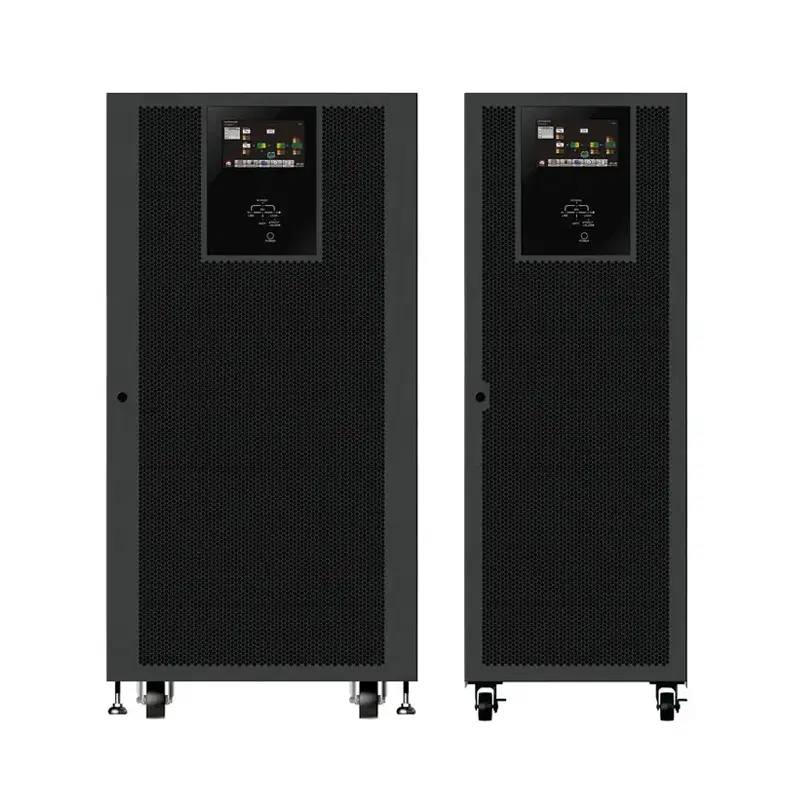Micro Data Center: The Strategic Hub for the Future of Edge Computing
Release time: 2025-02-27
What is a Micro Data Center?
A micro data center is not merely a “smaller version” of a traditional server room—it is a fully integrated, edge-native system designed for distributed environments. Key components include:
Rack-Level Infrastructure:
- Standardized racks (typically under 42U) pre-integrated with servers, storage, and networking equipment.
- Modular Power Distribution Units (PDUs), UPS systems, and lithium-ion battery backups with N+1 redundancy.
Intelligent Environmental Control:
- Sealed cabinets with precision cooling systems (e.g., direct liquid cooling or hot-aisle containment), achieving PUE as low as 1.1–1.3.
- Real-time sensors for temperature, humidity, and smoke detection, enabling adaptive cooling.
Security and Monitoring:
- Biometric access controls, video surveillance, and vibration alarms for physical security.
- AI-driven DCIM (Data Center Infrastructure Management) platforms for remote monitoring of power usage and equipment health.
Edge-Optimized Networking:
- Built-in SD-WAN gateways, 5G modules, and multi-cloud connectivity for low-latency data transmission.
Micro Data Center vs. Prefabricated/Modular System
While both fall under the modular category, MDCs differ fundamentally from containerized or prefab hall solutions:
| Criteria | Micro Data Center | Traditional Modular System |
|---|---|---|
| Scale | 1–10 racks, <100kW power capacity | Dozens to hundreds of racks, MW-scale capacity |
| Deployment Time | Hours to 2 days (plug-and-play) | 3–6 months (requires site preparation) |
| Use Case Adaptability | Edge sites, retail stores, factories | Large campuses, hyperscale cloud hubs |
| Customization Cost | <5% (standardized design) | >30% (highly bespoke engineering) |
| Energy Management | Decentralized AI optimization | Centralized control systems |
Key Differentiator: MDCs are purpose-built for edge computing, whereas traditional modular systems extend centralized architectures.
Top 5 Advantages of Micro Data Center
- Rapid Deployment & Scalability
- Factory-tested, pre-integrated units reduce on-site setup by 80% (e.g., Schneider Electric’s EcoStruxure MDC deploys in 8 hours).
- Lower Total Cost of Ownership (TCO)
- 40% lower CAPEX and 35% reduced OPEX compared to traditional builds (Uptime Institute, 2023).
- Harsh Environment Resilience
- Operates in extreme temperatures (-40°C to 55°C) with IP55-rated protection for industrial sites or remote oil fields.
- Edge Intelligence Enablement
- Local data processing slashes latency from 100ms to <5ms (critical for IoT-driven manufacturing).
- Sustainability
- Modular upgrades minimize e-waste; solar-ready designs support carbon-neutral operations.
The Optimal Deployment Scenario for Micro Data Center
Edge Computing Frontiers
- Autonomous vehicle networks, AR/VR rendering nodes (e.g., Meta’s edge metaverse infrastructure).
Industry 4.0 Facilities
- Real-time quality control in smart factories (Tesla processes 1TB/hour of visual data via MDCs).
Retail & Smart Cities
- AI-powered inventory management (Walmart reduced stockouts by 30% using MDCs).
Temporary & Emergency Use Cases
- Live event broadcasting (BBC’s Olympics coverage) or disaster recovery sites.
Telecom Network Edges
- 5G MEC (Multi-access Edge Computing) integration (Verizon boosts content delivery via MDC-enabled base stations).
Future Trend: From “Micro” to “Nano”
With advancements in chip-scale cooling and quantum encryption, MDCs are evolving into Nano Data Centers:
- Smaller Footprints: Embeddable in ATMs, elevators, or streetlights.
- Self-Healing Systems: AI-driven predictive maintenance replaces manual checks.
- Off-Grid Capabilities: Hydrogen fuel cells and energy harvesting enable fully autonomous operations.
Micro data centers represent the “capillaries” of modern computing infrastructure. As edge computing surges toward a projected $250 billion market (Gartner, 2025), businesses must rethink their strategies: not all data belongs in the cloud, but all operations need proximity to data. Adopting MDCs isn’t just an infrastructure choice—it’s a competitive imperative in the race for digital agility.

